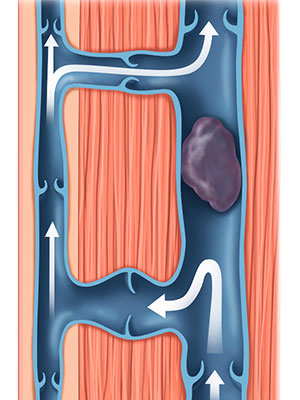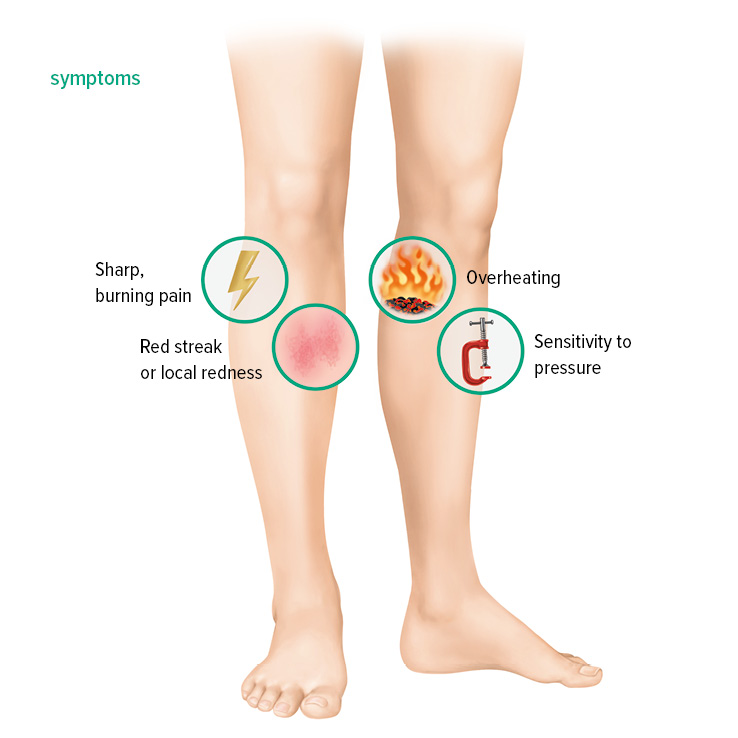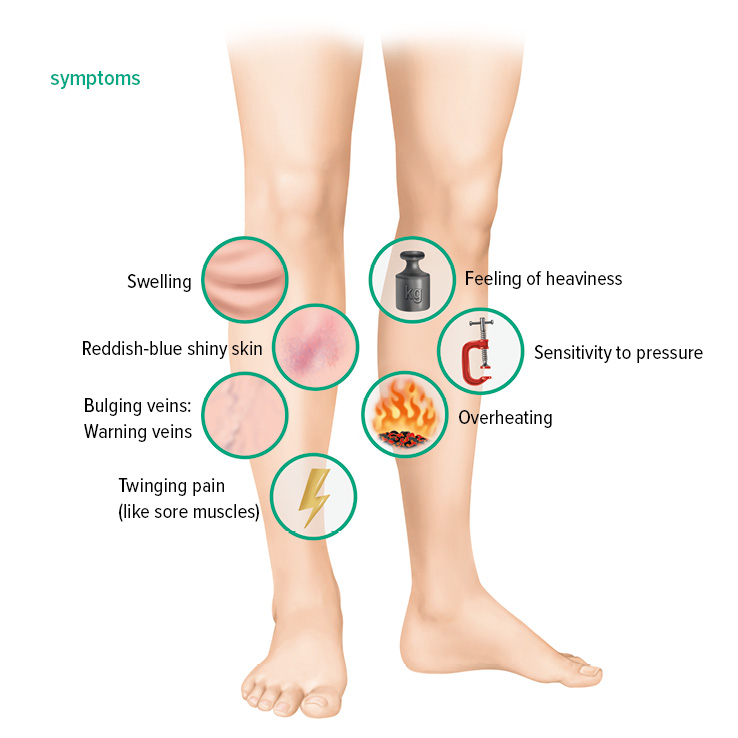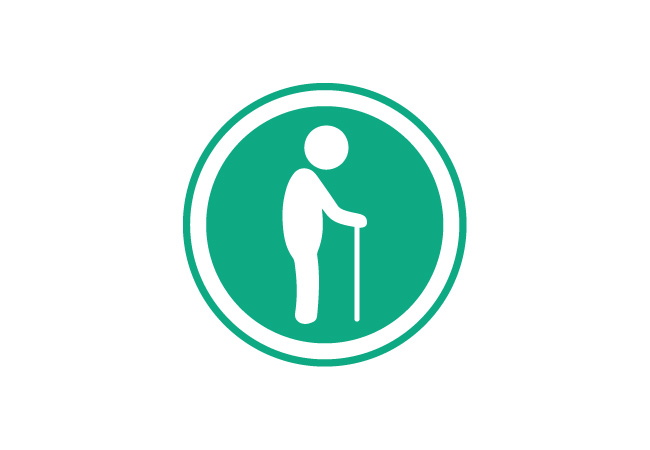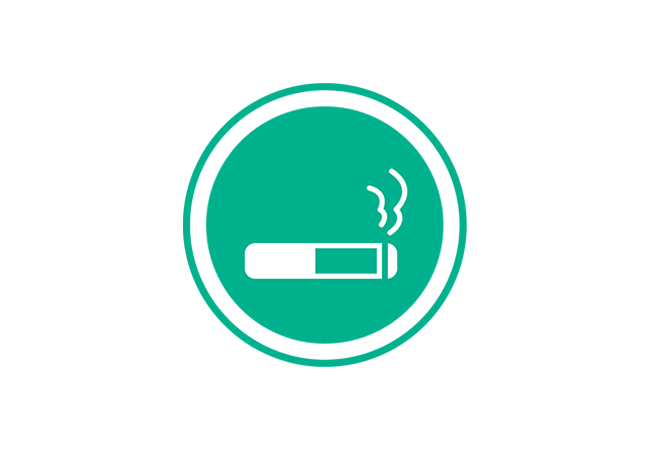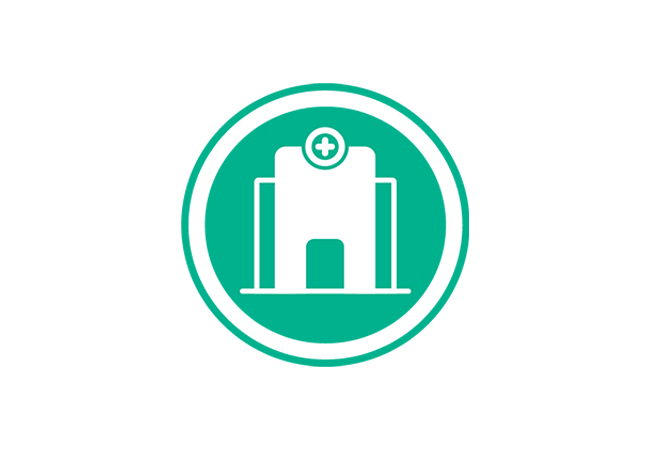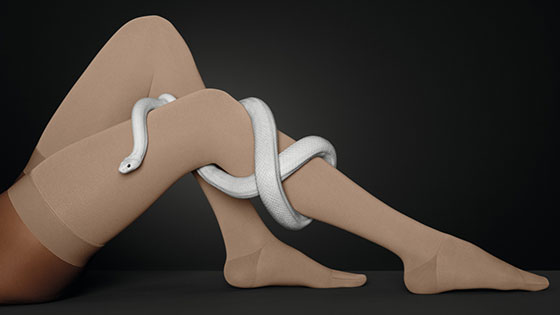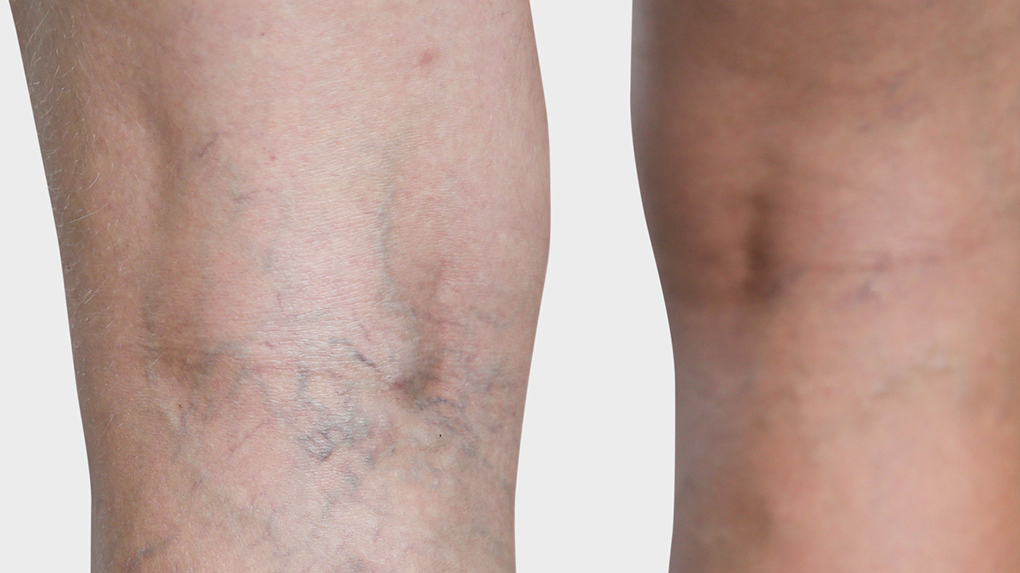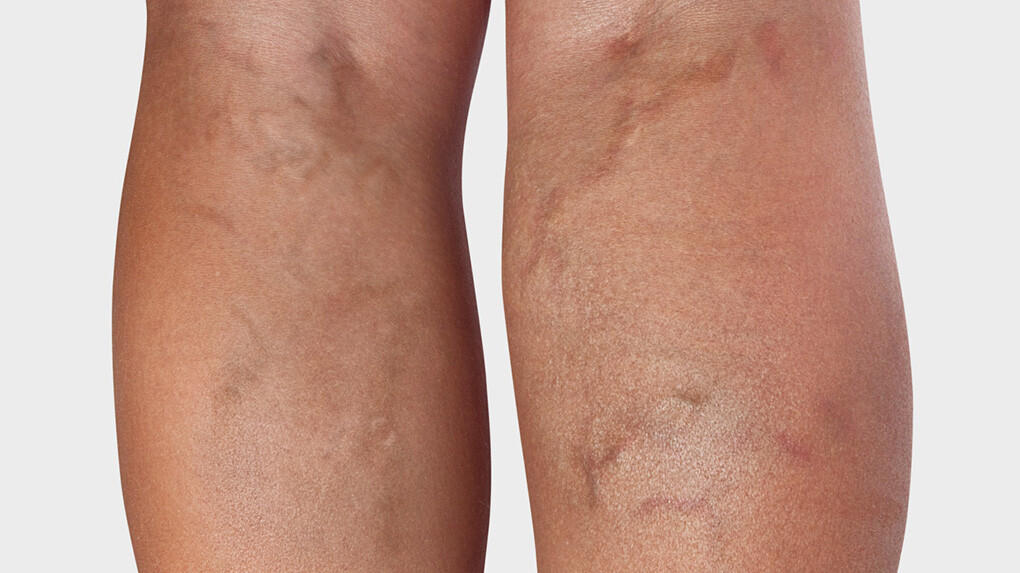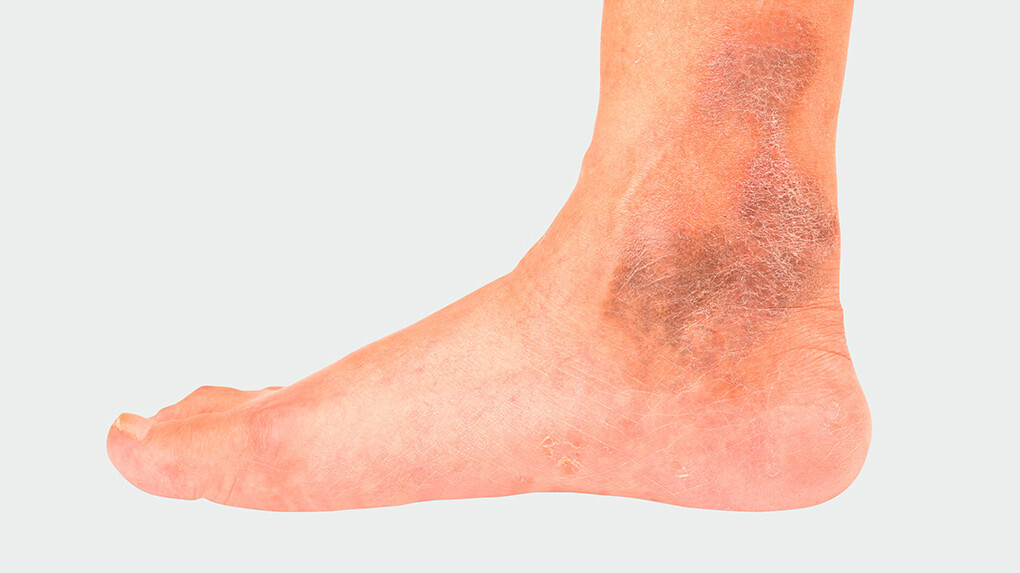Superficial vein thrombosis (SVT)
A less dangerous condition is superficial vein thrombosis, also known as thrombophlebitis. This is frequently the result of varicose veins, infections or injuries. In the case of superficial vein thrombosis, the blood clot forms just below the surface of the skin in one of the superficial veins. It causes a localised infection there. However, superficial vein thrombosis can also lead to complications such as the formation of a deep vein thrombosis or even a pulmonary embolism.


